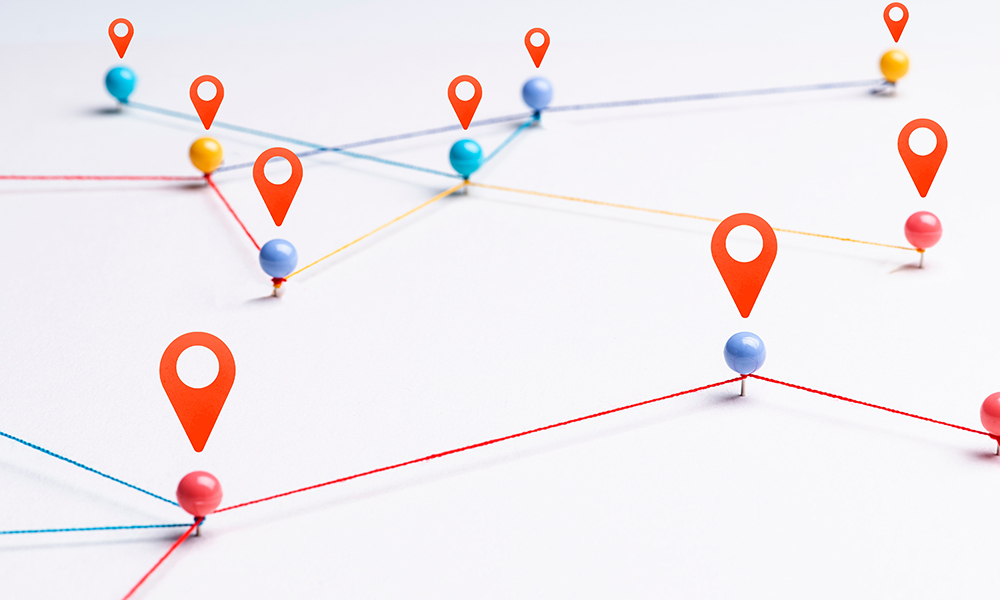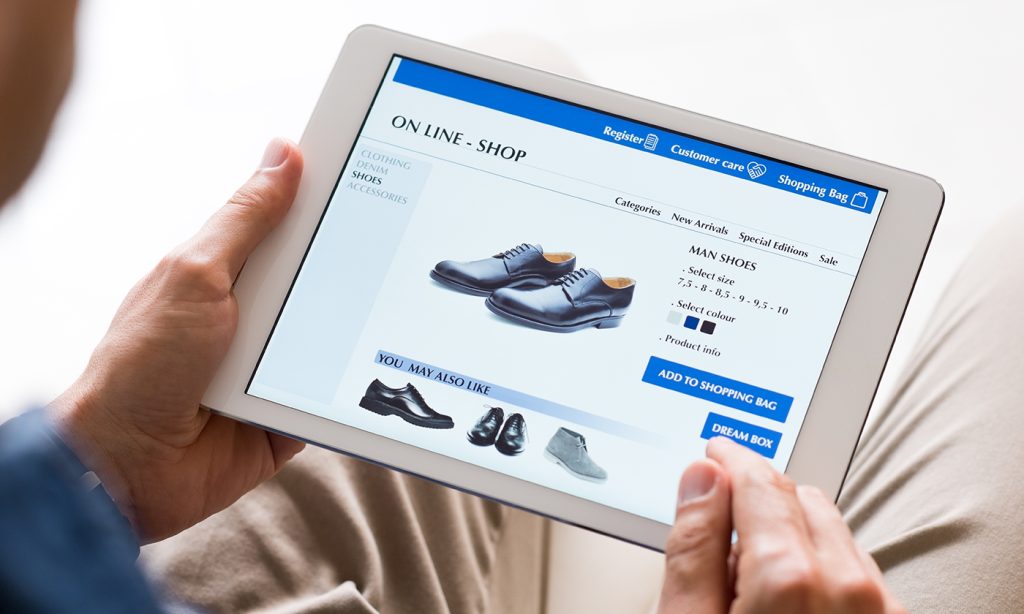Location-Based Marketing: What It Is, Types, and Trends

Location-based marketing has always been a silent force behind today’s massive advertising campaigns. Stiffer competition in the business-to-business (B2B) and business-to-consumer (B2C) spaces is pushing more companies, big or small, to take notice and see location dependent marketing as a necessity.
In a quest to vie for consumers’ elusive attention, marketing professionals are turning to location-based marketing techniques to maintain their edge. After all, the stakes are higher now—with social media and e-commerce’s rapidly expanding role in the big picture—therefore calling for innovative segmentation techniques.
It certainly looks like there’s money to be made from the situation. Data shows that a staggering 82% of smartphone users utilize their devices to conduct “near me” searches to look for stuff to buy. Also, 90% of consumers choose the top result.
Meanwhile, representatives from fast-moving consumer goods (FMCG) and general merchandise (GM) retailers are bullish on the benefits of location intelligence. A retail authority’s research claimed that over 80% of FMCG and GM retailers believed that geolocation analytics aided business development by saving them time and money.

What Is Location-Based Marketing? Why Is It Trending?
As the name suggests, location-based marketing largely depends on geolocation data. By tracking and analyzing the behavioral patterns of consumers in specific retail or business hubs, marketing professionals can ascertain their motivations for buying a product or availing a service.
Location-based technologies also help spot “anomalies” or random happenings in consumers’ daily routines. For instance, stopovers made by consumers on their way home may present an opportunity for marketers to upsell a product through in-app notifications. The product may not be something they need at the time, but that doesn’t mean the tactic can’t lead to a sale. Marketing professionals should not ignore location-based marketing trends when it comes to generating valuable insights into their endeavors.
How does location-based marketing work, though? We’ll tackle that by looking into its various types.
6 Types of Location-Based Marketing
Different strokes for different folks. It’s easy to see why the world’s top marketers would think that, too. A marketing strategy that works for one may not work for all. Here are six tried-and-tested tactics based on various companies’ experience.
Geotargeting
Geotargeting, also known as “radius targeting,” lets marketers know where target users are so they can serve them personalized messages based on their location. You can push ads touting ongoing sales and discounts to consumers who opted to let your app know when they are near any of your participating stores.
Geotargeting uses IP geolocation. You probably know that all devices connected to the Internet have unique IP addresses, making them identifiable to any IP geolocation tool user. Their IP addresses let you know where they are at all times.
To enable geotargeting, users will need access to an IP geolocation tool. For easy integration into existing systems or signup pages, they have two options—an IP geolocation API or an IP geolocation database. Both intelligence sources will give users the following details:
- Location data, including country, region, and time zone
- Up to five connected domains
- Autonomous System (AS) details, including the AS number (ASN), name, route, domain, and content type
- Internet service provider (ISP)
Geotargeting is a great way to improve customer experiences through personalization. By knowing an existing or prospective customer’s origin country, IP geolocation users can redirect them to localized web pages where they see content and even prices (especially for e-commerce pages) in their native language or preferred currency. That helps buyers do away with using Google Translate and currency converters that can dampen their experience.
Google search results rely on geotargeting to suggest nearby business establishments to users. Users who type “restaurants” into their search bar will, for instance, list nearby restaurants as results.
Behavioral Targeting
Behavioral targeting is a method of tracking consumer purchases made on specific e-commerce shops or any site that monitors user behavior. It uses a combination of activity tracking and IP geolocation.
In behavioral targeting’s case, IP geolocation, determined through an API or a database, can help users build location-based demographic profiles. These profiles can help them craft customized marketing campaigns (e.g., events or sales) meant for customers in a certain city, for example, during a country-specific holiday. Knowing the kinds of products that sell most on certain days can boost users’ sales. Note that holidays differ from location to location. Take Thanksgiving, for example. Canadians celebrate it in October while Americans do so in November.
And if you don’t already know, the cookies you allow to run on your browser when you visit sites are a means for the website owners to keep tabs on your moves or behavior on their pages. News sites, for instance, use such cookies to determine what kind of content you’re most interested in. Websites with e-commerce functionality, meanwhile, use them to identify the products you purchase over time. That’s how they know which ones to recommend and, sometimes, even when to do so.
Geofencing
Geofencing uses Global Positioning System (GPS), radio frequency identification (RFID), Wi-Fi, or cellular data to trigger an action when a mobile device user enters or exits a preset virtual boundary set up around a specific location. This boundary is called a “geofence.”
Geofencing allows users to trigger push notifications, text messages, alerts, or targeted ads via social media to boost marketing strategies. Users can set up a geofence around their store in a mall, for instance. People with their mobile devices on hand are bound to get notified of an ongoing sale, for example, when they enter your geofence. That could push them into entering your store and, hopefully, purchasing a product.
Mobile Targeting
Mobile targeting is a way for marketers to serve targeted ads to consumers via mobile devices. It works the same way as geotargeting, using users’ current geographic location to determine if it’s an excellent time to serve them ads. Examples include when they’re close to a particular establishment.
Mobile targeting, like geotargeting, lets marketers forge more personalized connections with consumers. An example would be making relevant ads, such as about an event, appear on installed social media apps based on where the users are.

Geo-Conquesting
Geo-conquesting uses consumers’ location data to divert their attention from competing locations. It can be considered the opposite of geotargeting and mobile targeting in that marketers don’t focus on attracting consumers but instead pushes them away from competitors.
Geo-conquesting uses GPS to determine where target consumers are. Burger King has been known to use the tactic against McDonald’s. Consumers who have the Burger King app installed on their mobile phones would typically get ads for US$0.01 Whoppers each time they come within 600 feet of a McDonald’s store. The strategy served it well by diverting would-be McDonald’s customers to Burger King stores instead.
Beaconing
Beaconing works pretty much like geofencing, but in a much smaller geographic area. The strategy uses Bluetooth or Wi-Fi to connect with a specific user app that is installed on customer devices. When the devices are within range of a beacon, an app owner (say, a restaurant that has a pop-up store in the stadium) can send push notifications to them. The device owners watching a basketball or any other sporting game, for example, can thus be prompted to buy snacks during half-time.
What’s good about beaconing is that the target audiences don’t have to be online to receive marketing messages. They just need to be within a beacon’s range.
All six location-based marketing types mentioned above work for businesses that wish to increase in-store foot traffic, enhance customer experience by delivering relevant ads and personalized content, and even, should you wish to, drive consumers away from competitors. There are, of course, several other kinds of location-based marketing that may prove helpful for companies. The choice depends on their goals and what technologies are available to them.
5 Location-Based Marketing Trends
To guide you on which location-based marketing strategies may work best for your organization, take a look at some of the trends that will continue to shape the retail landscape in the next few years.
Businesses will rely on beacons more for customer service and facility improvements.
Retailers should take advantage of beacons and geofencing tools for layout optimization and service quality enhancement. Measuring dwell times and foot traffic in specific locations or using heat map data through geofencing and beacons may point to a staffing or layout problem. That would allow businesses to come up with immediate solutions. Such location-based technologies were unheard of years ago, but they have caught on with marketers to date.
Marketers will invest more in proximity marketing for customer acquisition and real-time engagement.
Most people nowadays barely look away from their mobile devices. Their eyes are glued to their phone screens as they shop, eat, rest, do chores, or commute to work. A study revealed that American adults spend an average of three hours and 35 minutes on their mobile devices daily.
Marketers should see this as an opportunity to utilize near-field communication (NFC), beacons, and augmented reality (AR) to trigger the delivery of offers, personalized content, or promotions to consumers in their vicinity. They can use videos or games to market in-store promotions and keep customers in the proverbial loop. It’s no longer a question of why marketers have to do these types of promotion, too, because everyone else is doing it.
More brands will come out with localized versions of their mobile apps or websites.
Making apps and websites available in regional and local languages is not a new thing, but we’ll see more apps and sites adapted to several languages over time. In the past five years alone, there has been a steady rise in the kinds of media and advertisements in several local languages. The popularity of traveling due to a growing aspiration among younger generations to become citizens of the world drove this shift. The democratization of jobs, higher incomes, and the explosive growth of e-commerce are also factors that drove this location-based marketing trend.
Local citation and review sites will continue to gain traction.
Restaurant, travel directory, e-commerce, and related lifestyle and social bookmarking sites, such as Yelp, TripAdvisor, and more, will remain valuable to marketers as consumers turn to user-generated reviews to make purchasing decisions. Active users of these sites deem them more user-friendly and secure than social media platforms with questionable geotagging features like Facebook and Foursquare.
Also, any savvy marketer knows that maintaining presence on these sites is paramount to their local strategy, not only to increase eyeballs on their websites but also boost foot traffic in their physical locations.
A push to promote mobile payments will become a key priority.
As geotargeting takes centerstage, businesses should see it as a fortuitous time to engage in partnerships with new mobile payment gateway or fintech providers both in first-world and emerging economies.
Marketers can enhance their mobile payment services with geotargeting and geofencing technologies to direct consumers to the best locations. This approach is ideal for businesses that want to attract new customers or even steal those of their competitors.
As consumers’ tastes and choices evolve with time, so should the way you interact with them. Understanding where your customers come from is critical to the success of your marketing initiatives.
Keep an eye out for emerging location-based marketing trends and jump on the bandwagon so you won’t get left behind. While at it, make sure to use an IP geolocation tool (an API or a database) that would allow you to get granular data and run cost-effective and revenue-boosting campaigns.
